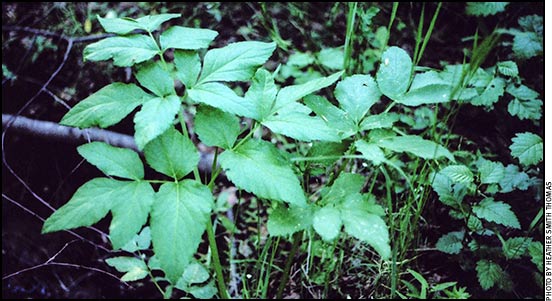HEALTH & NUTRITION...

Toxic Plants
Different regions have different problem plants.
Different regions have different problem plants; plains and prairies have some poisonous plants that don’t grow in the mountains and vice versa.
Some problem plants can be safely eaten in small amounts or certain stages of growth, while others are toxic at all times. Cattle poisoning often depends on palatability (some plants are rarely eaten), stage of development, portion eaten (some have more toxin in roots, seeds or leaves) and growing conditions.
Rachel Turnquist, forage extension specialist in Saskatchewan, says the main issues are identification and management.
“You need to know which plants are a problem in your pastures, and a general idea where different ones might be located. Some might be in wet areas (water hemlock, wild parsnip and poison hemlock, for instance),” she says. Read more.
Clostridial Diseases
Several deadly diseases are caused by bacteria called clostridia.
Several deadly diseases, including blackleg, malignant edema, “redwater” and “overeating disease,” are caused by bacteria called clostridia.
These bacteria form a protective waxy covering in their dormant stage (spores) when exposed to heat or drying, and can remain alive almost indefinitely. Some live in soil for many years and infect animals later when ingested with feed or introduced into a wound. Spores can also exist within the body in a latent state without causing disease, then suddenly come to life and multiply when conditions become favorable. Read more.
Understanding Pulmonary Hypertension
Expert discusses brisket disease and late-term feedlot death.
If you want to learn a thing or two about brisket disease, Veterinarian Tim Holt is a go-to guy. The Colorado State University associate professor and Gunnison-area practitioner offered a crash course on brisket disease during the 2018 Beef Improvement Federation Convention June 20-23 in Loveland, Colo. Holt shared from research and his own field experience with the condition, which is correctly named bovine pulmonary hypertension (BPH).
Sometimes called high-altitude disease, BPH most often affects calves or young adult cattle moved to high-elevation pastures, occurring most often among animals grazing above 5,000 feet. BPH occurs when low oxygen levels cause the pulmonary arteries to constrict, increasing resistance to blood flow and causing blood pressure in the pulmonary arteries to rise. Eventually, the heart cannot pump enough blood through the pulmonary arteries into the lungs to keep up with the volume entering the heart. This leads to dilation of the right chambers of the heart and congestive heart failure. Read more.
Zinc’s Role in Fertility
Zinc plays vital role in animal and human fertility, can help scientists quickly diagnose infertility.
Infertility affects about 20% of the U.S. population and can be incredibly costly; it also costs the livestock industry billions of dollars each year. Researchers at the University of Missouri have found that zinc plays a key role in promoting fertility in males, a discovery that has implications for improved in vitro fertilization (IVF) and artificial insemination (AI) in livestock, and for human infertility diagnostics and therapies.
“Zinc is linked directly with fertility,” said Peter Sutovsky, a professor of animal science in MU’s College of Agriculture, Food and Natural Resources. “We have known that giving males zinc supplements — whether pigs or humans — improves fertility. Now we know that analyzing zinc signatures can help us quickly evaluate the fertilizing potential and quality of sperm.” Read more.
Successful Creep-feeding Management
Benefit from creep feed and good management.
Cow-calf producers often simply view creep-feeding as a way to increase calf weaning weights beyond what can be produced with mother’s milk and available forage. However, the benefits of creep-feeding can reach well beyond weaning weight. Read more.
Identifying Hill Climbers and Bottom Dwellers
The way cattle graze is a trait worth tracking.
“Cattle are not like lawnmowers.”
While Derek Bailey’s opening statement during his presentation, “Development of Grazing Distribution Phenotypes,” during the Beef Improvement Federation Research Symposium and Convention in Loveland, Colo., might have drawn a few chuckles, cattlemen cannot deny the truth in his statement.
The lives of cattlemen would undoubtedly be made easier if cattle were like lawnmowers, consuming everything in an area in an even, consistent manner. Unfortunately, this is not reality, he said.
Bailey said in the western region of the United States, where cattle are raised on rangeland, grazing distribution has recently become a hot topic. Cattle are selective grazers, choosing to graze areas with higher biomass and greater nutrients while avoiding areas with toxins, steep slopes and areas at greater distance from water. Read more.
Use Caution if Grazing CRP Ground
Northern CRP land freed for grazing in drought areas needs supplements.
Release of Conservation Reserve Program (CRP) land for grazing in northern Missouri gives relief for some cow herds on drought-shorted pastures.
The CRP with USDA Farm Service Agency pays farmers to keep erosion-prone land out of production. It now allows short-term grazing in 42 counties in northern Missouri.
The counties are mostly north of a line from Kansas City to Marshall and Hannibal.
Read more.
Cattle Diseases: Common Conditions/Terms
Click here for a list of common conditions and terms related to beef cattle diseases, such as anaplasmosis, brucellosis, BVD, E. coli, IBR and others.
[Click here to go to the top of the page.]






